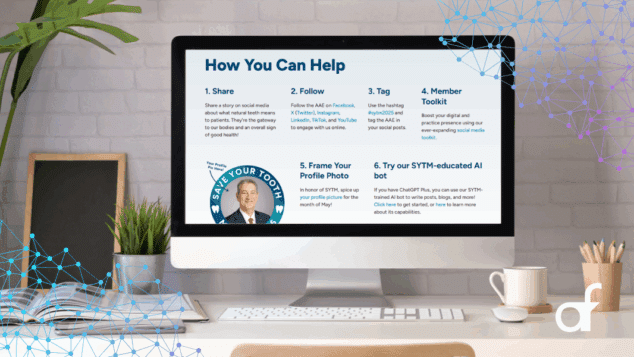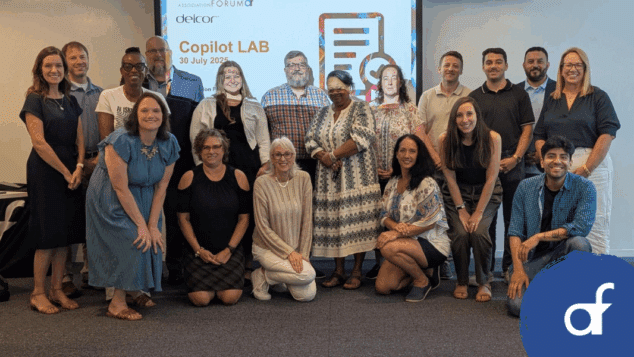Integrating Software? Follow These 5 Steps

Software is an important part of any efficient and engaging association. The broad range of services offered to the association community requires just as broad a range of technology and tools.
Many associations rely on a number of divergent and often duplicative platforms to provide service, member value, and to manage the association’s business operations. Software can be easy to purchase and use but is maddingly complex when combining into one overall management system.
Connecting systems can be a real challenge. When looking to connect two systems, look at the 5 steps below to help integrate different applications and information systems.
1. Business Goals
Understanding how the software supports the business goals of the organization is key.
If the association is looking to increase membership, engagement, event registrations, and so on – know what the expected goals are before starting an integration. Some integrations lead to quick results, and others take time to justify the expense and time.
2. Member Experience
Integrations should improve the experience for the member. Keeping their experience in mind when looking at an integration should be a key consideration.
Commonly referred to as UX (User Experience), the member’s journey may not be as straightforward as it appears. How the member interacts with one platform before switching to another should be mapped out.
Before signing on to new software or a lengthy development project, create a workflow diagram or business process model (BPM) to define what happens and how the member journey works at present.
Understanding how the member connects to the different applications will help determine which type of integration may best solve the problem.
3. Type of Integration
The difficult part of an integration is not the technology; it’s how the applications should work together. Each application works more or less on its own. What these were not designed to do was work together with other systems. When choosing which direction to take, first understand what the options are. Common integrations to consider include:
SSO – Single Sign On
Single sign on refers to the ability to log into a system only once, regardless of the number of different applications in use. This saves the user the time and frustration of multiple log ins, leading to a diminished experience. SSO’s are commonly referred to as a “handshake”.
Single sign-on is not ‘simple’ – significant work is often required to have two systems work together. SSO’s work on a process known as ‘authentication’ where a member’s permission level is checked to see if they can use both applications and if so, what they are allowed to access.
API – Application Programming Interface
API’s are generally more complex than SSO’s. This type of integration is where data can flow between two or more different systems. Depending on how the different systems control the data, API’s can be one way, meaning data flows from one system to another, or these can be two-way, where data can flow between both systems.
Middleware
Middleware is an application that is hosted and maintained outside of the main applications in an integration. It acts as an intermediate step in the process to connect different systems. It is often used to validate and change the data fields between two systems.
Middleware is often described as a ‘custom application’ and can vary in complexity and cost, depending on what needs to be integrated. One common type of middleware is a file transfer, taking data from one system and placing it in a different location. This location can then serve the data into another application. Common file types used in these transfers are CSV and JSON.
Website Overlay
This is where a website runs on a different platform than the AMS (Association Management System), LMS (Learning Management System), Event App, and so on.
Connecting a website to other applications can be tricky and often takes a lot of time and resources. WordPress, for example is fairly easy to use and set up but can be complex when integrating into other systems and databases.
4. Time and Cost
How much time does it take and what will it cost are top of mind with any project.
A part of this question often not asked is: can it be done by date X or not? Start with when it is needed by, then ask how much total time it will take and what the cost is.
A good rule of thumb is if it is needed in 3 months, then you need to start now. Yesterday is even better. 6 months ahead of time is ideal. How much time required depends on the complexity, but anything that needs to be live in less than 3 months is a risk.
Always add buffers to both the estimated delivery date and the overall time your team and the other parties will need to get the integration live. Projects generally don’t fail due to too much added time.
5. Stay or Go?
Staying with applications influences the type of integration and any possible complexity.
Until software is available on the market that is specifically designed to connect with any association management system, associations are left with the choice of staying on a particular platform or cycling through different applications to find the right solution.
Setting up integrations to work for a short time is an added burden and may not provide significant long-term value. Constantly cycling through platforms is another risk to consider. Turnover in information systems can be as disruptive as turnover in staff and management.
When deciding to stay or go with an application, getting the most out of existing platforms before adding something new is a good first step. Work with your software vendors to fine tune how your association uses the application.
Once you have taken the applications as far as these can be taken, then start the process to identify if an integration or new application is needed.
Remember the Member
Use these 5 rules of thumb to make better connections for your members.
Done well integrations help your members make the most out of the community experience instead of navigating through complex and often confusing online user experiences. The member connection should drive the system connections and not the other way around.
Tags
Related Articles
Turning AI Into Member Value
How AAE’s Save Your Tooth Month GPT became a personalized marketing assistant for members
The Power of Taking the AI Journey Together
Forum’s first Microsoft Copilot Lab brought together 20 professionals to explore how smart adoption of...
Protecting Healthcare: Tackling Cyber Threats to Hospitals and Patients
The critical role of cybersecurity in healthcare and association management.






